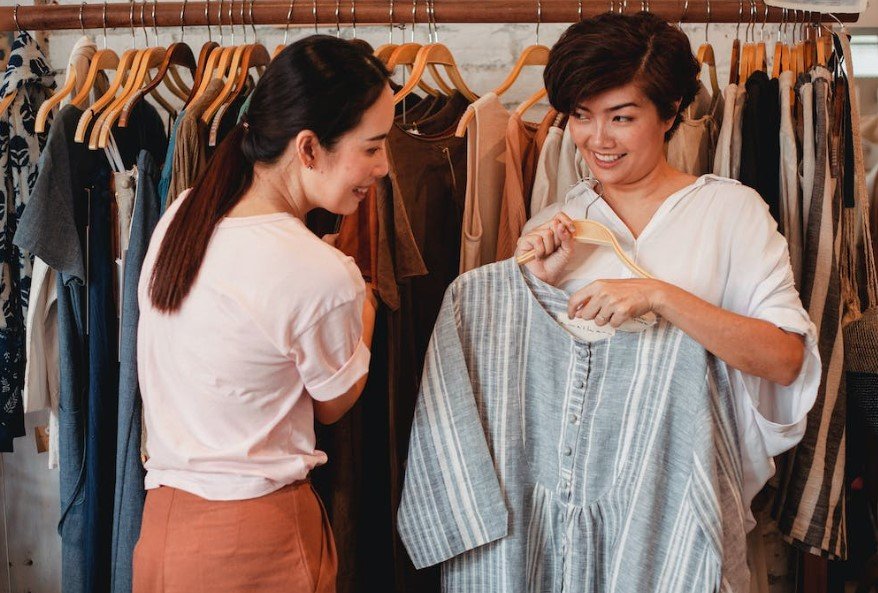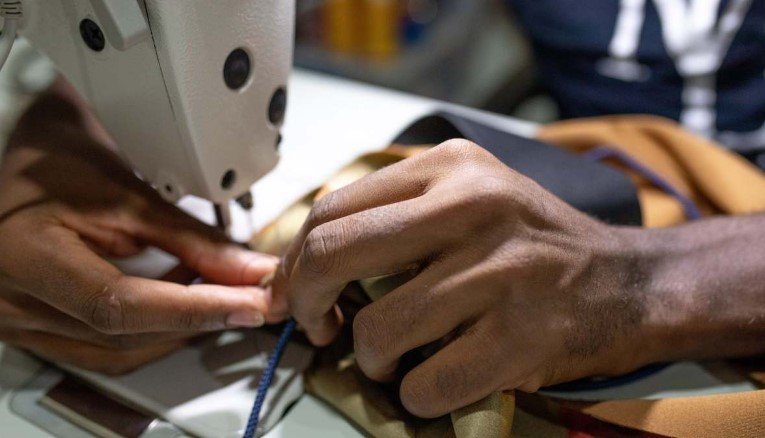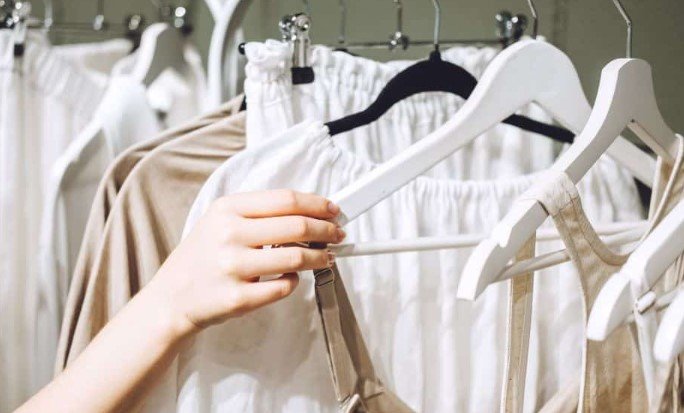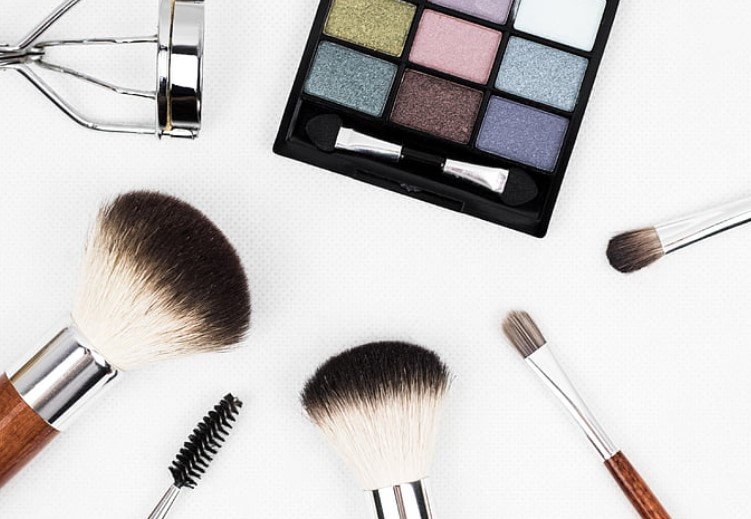Sustainable fashion is a term that refers to clothing that is designed, produced, and consumed in a way that minimizes the environmental and social impacts of the fashion industry. It means choosing clothes that are made from natural, organic, recycled, or upcycled materials, that are ethically sourced and manufactured, that are durable and long-lasting, and that can be reused, repaired, or recycled. By following sustainable fashion practices, you can help reduce the carbon footprint, water consumption, waste generation, and pollution caused by fast fashion. You can also support fair trade, human rights, animal welfare, and social justice in the fashion industry.
The Environmental and Social Impacts of Fast Fashion

Fast fashion is a business model that relies on producing large quantities of cheap and trendy clothing items at a rapid pace. It is driven by consumer demand for constant newness and low prices. However, fast fashion has a huge negative impact on the environment and society. Some of the main problems caused by fast fashion are:
- It consumes a lot of natural resources, such as water, land, energy, and chemicals. For example, it takes about 2,700 liters of water to make one cotton t-shirt1, which is enough to meet the average person’s drinking needs for two and a half years2.
- It generates a lot of greenhouse gas emissions, which contribute to global warming and climate change. The fashion industry is responsible for about 10% of global carbon emissions3, more than all international flights and maritime shipping combined4.
- It creates a lot of waste, both in the production process and in the disposal of unwanted clothes. About 85% of textiles end up in landfills or are incinerated5, where they release harmful toxins and gases. Only 15% of textiles are recycled or donated5.
- It exploits workers, especially in developing countries, where most of the clothing manufacturing takes place. Many workers face low wages, long hours, unsafe working conditions, child labor, forced labor, and human rights violations6. The 2013 Rana Plaza collapse in Bangladesh, which killed over 1,100 garment workers7, was a tragic example of the lack of safety standards and accountability in the fast fashion industry.
- It affects consumers’ well-being, as they are exposed to toxic chemicals in clothing materials and pressured to keep up with ever-changing trends. Fast fashion can also lead to overconsumption, compulsive buying, dissatisfaction, and anxiety8.
How to Shop for Eco-Friendly Clothing: Tips and Tricks?
If you want to make more sustainable choices when it comes to your wardrobe, here are some tips and tricks to help you shop for eco-friendly clothing:

- Do your research. Before you buy anything, check the labels and tags of the clothing items. Look for information about the materials used (preferably natural or recycled), the origin of the fabrics (preferably local or fair trade), the certifications (such as organic or eco-labels), and the care instructions (preferably low-impact). You can also use online tools such as Good On You or Fashion Revolution to find out more about the environmental and social performance of different brands.
- Buy less but better. Instead of buying many cheap and low-quality items that you will wear only once or twice, invest in fewer but higher-quality items that you will wear for a long time. Choose classic and versatile styles that suit your personality and needs. Opt for durable and easy-to-care fabrics that will last longer. Avoid synthetic materials that shed microplastics when washed.
- Shop second-hand or vintage. One of the best ways to reduce your environmental impact is to buy clothes that already exist. You can find unique and affordable pieces at thrift stores, flea markets, online platforms (such as Depop or ThredUp), or swap parties with your friends. You can also extend the life cycle of your clothes by donating or selling them when you no longer need them.
- Upcycle or repair your clothes. Another way to give your clothes a new lease of life is to upcycle or repair them. You can transform your old clothes into new ones by altering them (such as cutting, dyeing, embroidering), combining them (such as patching), or adding accessories (such as buttons). You can also fix any damages (such as holes, tears, stains) by sewing them yourself or taking them to a tailor.
- Support sustainable fashion brands. If you want to buy new clothes from ethical and eco-friendly sources, look for brands that follow sustainable fashion principles. Some examples of sustainable fashion brands are Wholesome Culture, [Christy Dawn], [Boyish Jeans], [Pact], and [Cariuma]. You can also support local and independent designers who use organic or recycled materials, employ fair trade practices, and produce small batches or made-to-order items.
The Benefits of Buying Second-Hand, Upcycling, and Repairing Clothes

Buying second-hand, upcycling, and repairing clothes are some of the most sustainable ways to dress. They have many benefits for the environment, society, and yourself. Some of the main benefits are:
- They save natural resources and reduce emissions. By buying second-hand, upcycling, and repairing clothes, you avoid the use of new materials, water, energy, and chemicals that are required to make new clothes. You also prevent the emission of greenhouse gases that are associated with the production, transportation, and disposal of new clothes.
- They reduce waste and pollution. By buying second-hand, upcycling, and repairing clothes, you prevent them from ending up in landfills or incinerators, where they would take up space and release harmful substances. You also reduce the amount of microplastics that are released into the waterways and oceans when synthetic clothes are washed.
- They support ethical and social causes. By buying second-hand, upcycling, and repairing clothes, you support the workers and communities that are involved in the fashion industry. You can help provide income and opportunities for people who work in thrift stores, flea markets, online platforms, or tailoring services. You can also donate or sell your unwanted clothes to charities or organizations that help people in need.
- They express your creativity and individuality. By buying second-hand, upcycling, and repairing clothes, you can create your own unique and personal style. You can find rare and vintage pieces that no one else has. You can customize your clothes to fit your preferences and needs. You can also have fun and learn new skills by experimenting with different techniques and materials.
The Best Sustainable Fashion Brands to Follow and Support

There are many sustainable fashion brands that are making a positive difference in the fashion industry. They offer stylish and high-quality products that are made from natural or recycled materials, that are ethically sourced and manufactured, that are durable and long-lasting, and that can be reused, repaired, or recycled. Here are some of the best sustainable fashion brands that you should follow and support:
- Wholesome Culture: A US-based brand that makes eco-friendly apparel with vegan and animal-friendly messages. Their designs are printed with water-based ink on organic cotton, recycled plastic bottles, or bamboo fabrics. They also donate 10% of their profits to animal rescues and environmental organizations.
- Christy Dawn: A Los Angeles-based brand that makes sustainable dresses from deadstock fabric (excess fabric left over from larger fashion houses). They also grow their own organic cotton in India using regenerative farming practices. They pay fair wages to their workers and use biodegradable packaging.
- Boyish Jeans: A US-based brand that makes trendy denim from recycled cotton or organic cotton. They use eco-friendly dyes, buttons, labels, hangtags, and packaging. They also partner with 1% for the Planet to donate 1% of their sales to environmental causes.
- Pact: A US-based brand that makes easy basics from organic cotton. They use non-toxic dyes and water-saving processes. They also partner with Fair Trade USA to ensure fair wages and safe working conditions for their workers.
- Cariuma: A Brazil-based brand that makes colorful sneakers from natural or recycled materials such as organic cotton, bamboo, cork, sugarcane, or plastic bottles. They use low-impact dyes and carbon-neutral shipping. They also plant two trees for every pair sold.
How to Start Your Own Sustainable Fashion Project or Business?
If you have a passion for fashion and sustainability, you might want to start your own sustainable fashion project or business. This can be a rewarding way to express your creativity, share your values, and make a positive impact on the world. Here are some steps to help you start your own sustainable fashion project or business:
- Define your vision and mission. What is the purpose of your project or business? What problem do you want to solve? What value do you want to create? What impact do you want to have? Write down your vision (what you want to achieve) and mission (how you want to achieve it) statements.
- Identify your target market and customer segment. Who are you creating your project or business for? What are their needs, preferences, pain points, motivations? How can you reach them? How can you communicate with them? Conduct market research and customer interviews to understand your potential customers better.
- Choose your product or service offering. What are you going to offer to your target market? What are the features, benefits, advantages of your product or service? How does it differ from other existing products or services? How does it align with your vision and mission? Choose a product or service that is feasible.







